为Linux 操作系统建立兼容的 Windows命令接口
Posted qi-lin
tags:
篇首语:本文由小常识网(cha138.com)小编为大家整理,主要介绍了为Linux 操作系统建立兼容的 Windows命令接口相关的知识,希望对你有一定的参考价值。
简单实现的dos命令
CLS, DATE,TIME,FIND,FINDSTR,COMP,FC,EXIT,HELP,MORE
说明
- 由于自己能力和时间有限,程序依旧存在不少bug,并且不是原模原样的实现dos命令,有的简单实现,有的命令参数众多,只实现了几个
- 这个程序写的并不优雅,违反了很多大忌,只是简单能跑
- 写完后我再也不想见到“段错误”这三个字,心酸,这个可能在出现段错误时为你提供点解决思路https://www.cnblogs.com/zl-graduate/p/5735288.html
- 使用的环境
- gcc 9.2.1 20190909
- GNU gdb (Debian 8.3-1) 8.3
- Kali-Linux-2018.2-vm-amd64
- 参考的Linux api文档
结构
为了演示,所用到的两个文档1.txt 2.txt
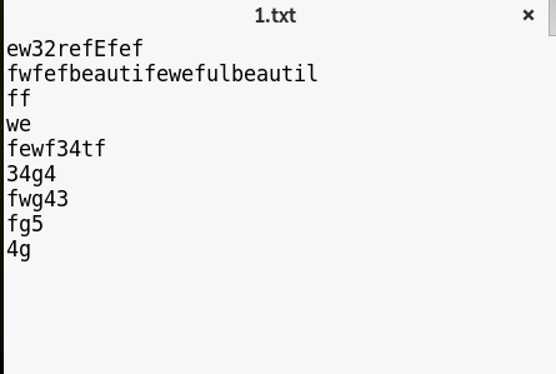
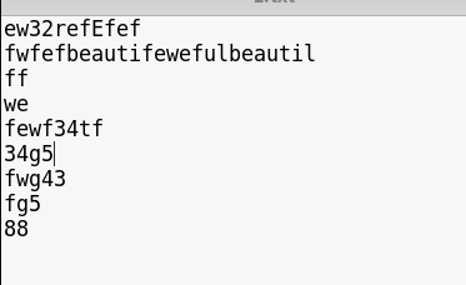
CLS
功能
cls命令的功能是清屏
设计流程
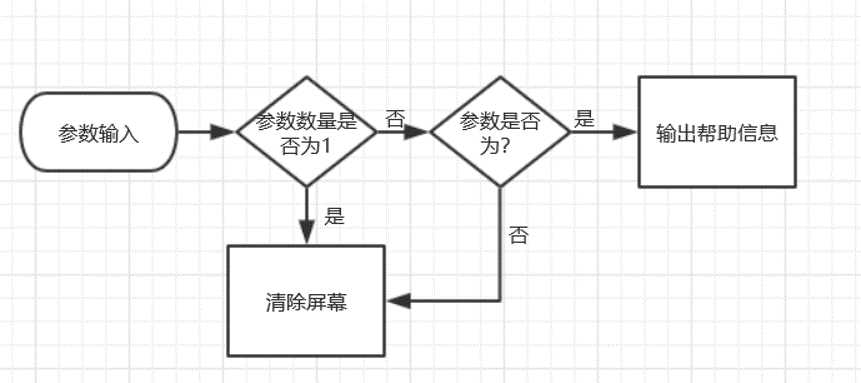 其实就是简单地 fputs("x1b[2Jx1b[H", stdout);其中的不明所以的字符串是VT100的控制码,部分定义如下
"x1b[2J"清除整个屏幕,行属性变成单宽单高,光标位置不变
"x1b[H"光标移动
�33[0m 关闭所有属性
�33[1m 设置为高亮
�33[4m 下划线
�33[5m 闪烁
�33[7m 反显
�33[8m 消隐
�33[nA 光标上移 n 行
�33[nB 光标下移 n 行
�33[nC 光标右移 n 行
�33[nD 光标左移 n 行
�33[y;xH 设置光标位置
�33[2J 清屏
�33[K 清除从光标到行尾的内容
�33[s 保存光标位置
�33[u 恢复光标位置
�33[?25l 隐藏光标
�33[?25h 显示光标
�33[30m – �33[37m 设置前景色
其实就是简单地 fputs("x1b[2Jx1b[H", stdout);其中的不明所以的字符串是VT100的控制码,部分定义如下
"x1b[2J"清除整个屏幕,行属性变成单宽单高,光标位置不变
"x1b[H"光标移动
�33[0m 关闭所有属性
�33[1m 设置为高亮
�33[4m 下划线
�33[5m 闪烁
�33[7m 反显
�33[8m 消隐
�33[nA 光标上移 n 行
�33[nB 光标下移 n 行
�33[nC 光标右移 n 行
�33[nD 光标左移 n 行
�33[y;xH 设置光标位置
�33[2J 清屏
�33[K 清除从光标到行尾的内容
�33[s 保存光标位置
�33[u 恢复光标位置
�33[?25l 隐藏光标
�33[?25h 显示光标
�33[30m – �33[37m 设置前景色
效果
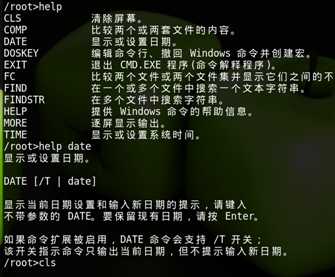
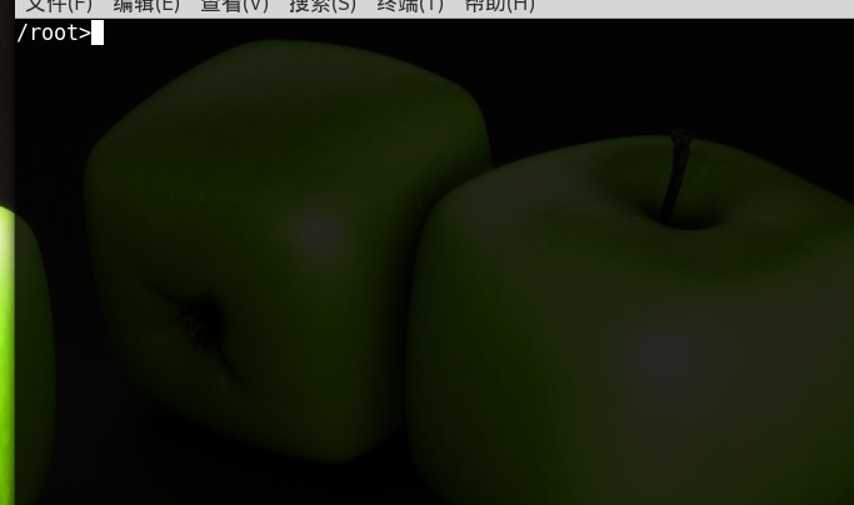
DATE
功能
date 命令用来查看和修改当前日期 详细操作查看https://jingyan.baidu.com/article/1974b2893e7d62f4b1f774ff.html
设计流程
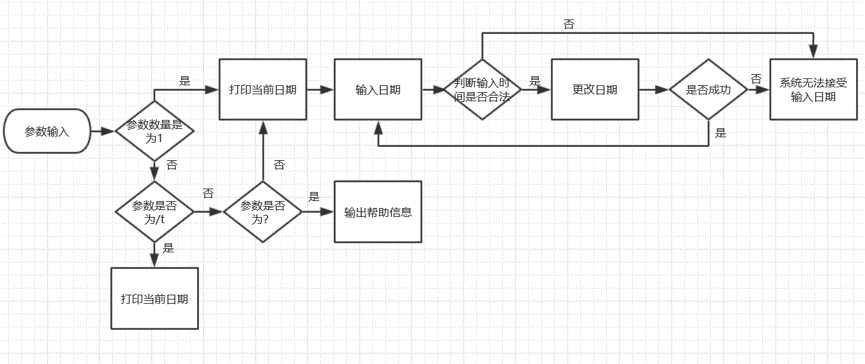 判断是否有输入参数t,?,进行相关处理。
如果没有则打印当前日期,并提示输入更改日期,判断日期是否合法再进行修改
判断年月日是否合法直接用了这位博主的代码
https://blog.csdn.net/freeape/article/details/48682411
判断是否有输入参数t,?,进行相关处理。
如果没有则打印当前日期,并提示输入更改日期,判断日期是否合法再进行修改
判断年月日是否合法直接用了这位博主的代码
https://blog.csdn.net/freeape/article/details/48682411
效果

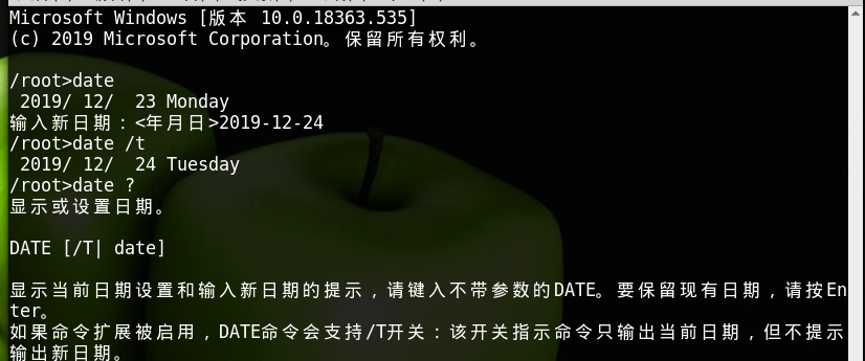
TIME
功能
time 用来查看和修改计算机时间 详细操作查看https://jingyan.baidu.com/article/aa6a2c14ab5ac90d4c19c492.html
设计流程
 判断是否有输入参数t,?,进行相关处理。
如果没有则打印当前时间,并提示输入更改时间,判断时间是否合法再进行修改
判断是否有输入参数t,?,进行相关处理。
如果没有则打印当前时间,并提示输入更改时间,判断时间是否合法再进行修改
效果
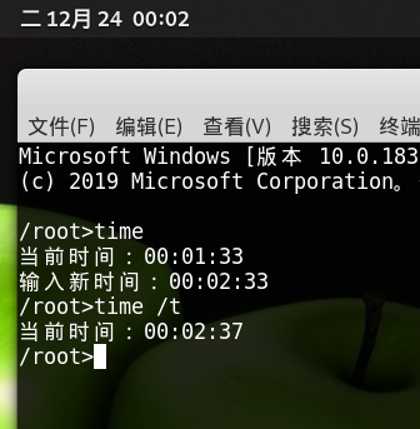
FIND
在之后涉及比较的命令的程序都参考了https://zhidao.baidu.com/question/237942227.html下一骑当后的回答
功能
find 命令用于查找文档中的特定字符和数字及行号 详细操作查看https://jingyan.baidu.com/article/86f4a73ecfe08637d65269ef.html
设计流程
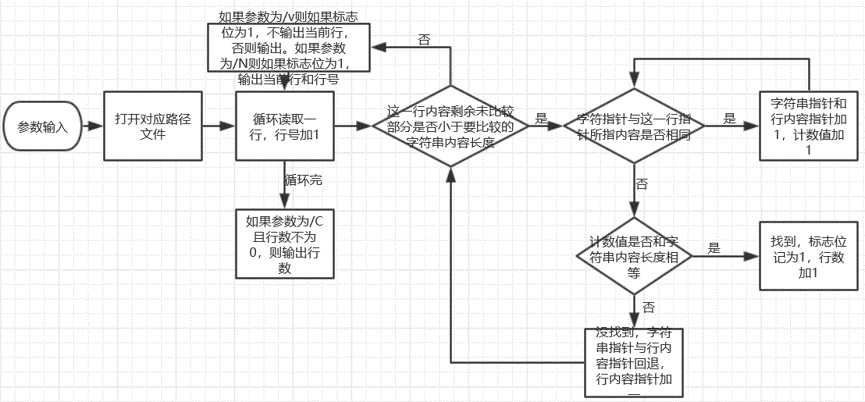 采用指针遍历文件的匹配算法来寻找字符串,并通过输入参数/C/N/V等控制输出打印的形式
采用指针遍历文件的匹配算法来寻找字符串,并通过输入参数/C/N/V等控制输出打印的形式
效果
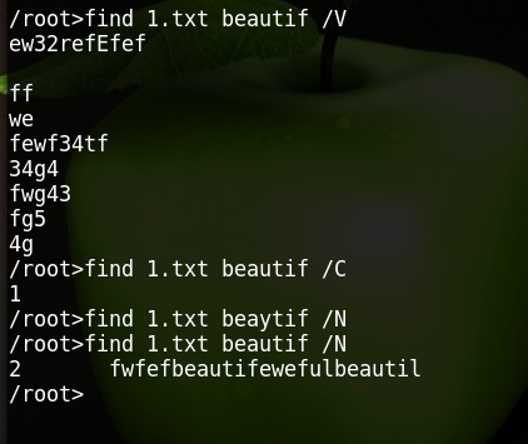
FINDSTR
这个命令自己实现的并不完全
功能
findstr是find的升级版 详细操作查看https://jingyan.baidu.com/article/a65957f418641e24e67f9b99.html
设计流程

 命令所需参数有文件路径,文件类型和所搜寻的字符串
该模块包含两个函数
findstr函数如上图1,主要负责遍历目录与文件,挑选符合参数决定的文件类型
find1函数如上图2,主要负责采用指针遍历文件,与参数决定的字符串进行对比,找到所匹配的字符串。每次读取一行采用指针遍历方法与字符串进行对比
对于文件的遍历和文件类型的识别参考了
https://zhidao.baidu.com/question/683010229831852652.html
https://www.cnblogs.com/xudong-bupt/p/3504442.html
以下是我的程序
命令所需参数有文件路径,文件类型和所搜寻的字符串
该模块包含两个函数
findstr函数如上图1,主要负责遍历目录与文件,挑选符合参数决定的文件类型
find1函数如上图2,主要负责采用指针遍历文件,与参数决定的字符串进行对比,找到所匹配的字符串。每次读取一行采用指针遍历方法与字符串进行对比
对于文件的遍历和文件类型的识别参考了
https://zhidao.baidu.com/question/683010229831852652.html
https://www.cnblogs.com/xudong-bupt/p/3504442.html
以下是我的程序
while ((ptr = readdir(dir)) != NULL)
{
if (strcmp(ptr->d_name, ".") == 0 || strcmp(ptr->d_name, "..") == 0) //是当前目录和父目录
continue;
else if (ptr->d_type == 4) //是dir
{
char *cpath = (char *)malloc(strlen(path) + strlen(ptr->d_name) + strlen("/") + 1);
strcpy(cpath, path);
strcat(cpath, "/");
strcat(cpath, ptr->d_name);
//findstr(cpath, type, str);
}
else//是文件
{
p = strrchr(ptr->d_name, ‘.‘);//取得文件最后一个.后的字符,即文件的类型
sprintf(ftype, "%s", p);
if (strcmp(ftype, type) == 0)
{
char *fpath = (char *)malloc(strlen(path) + strlen(ptr->d_name) + strlen("/") + 1);
strcpy(fpath, path);
strcat(fpath, "/");
strcat(fpath, ptr->d_name);
find1(fpath, str);
}
}
}
使用readdir()返回一个结构
struct dirent
{
ino_t d_ino;
ff_t d_off;
signed short int d_reclen;
unsigned char d_type;
har d_name[256];
};
d_ino 此目录进入点的inode d_off 目录文件开头至此目录进入点的位移 d_reclen _name的长度,不包含NULL字符 d_type 所指的文件类型 d_name 文件名
效果
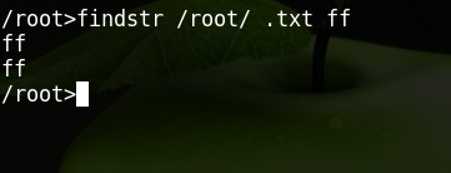
COMP
该命令要求两个文件的大小相同,获取文件大小的方法参考了https://www.cnblogs.com/xudong-bupt/p/3506772.html
功能
comp逐字节比较两个文件或文件集的内容 详细操作查看https://jingyan.baidu.com/article/90808022da9bbbfd91c80f1b.html](https://jingyan.baidu.com/article/90808022da9bbbfd91c80f1b.html)
设计流程

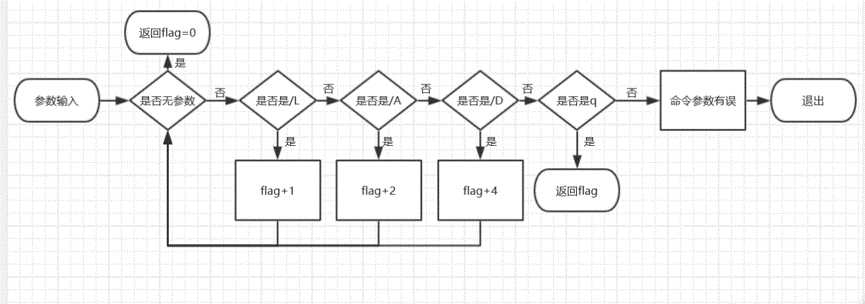
 主要包含三个函数comp,command_comp,file_comp分别对应上图1,2,3
comp主要通过控制流程控制程序走向
command_comp主要对输入的参数进行分析,并返回一个和(包含参数信息,/L对应1,/A对应2,/D对应4,无对应0)
file_comp主要通过匹配算法进行字符串的查找,并根据对参数指令的分析返回的值进行打印输出
主要包含三个函数comp,command_comp,file_comp分别对应上图1,2,3
comp主要通过控制流程控制程序走向
command_comp主要对输入的参数进行分析,并返回一个和(包含参数信息,/L对应1,/A对应2,/D对应4,无对应0)
file_comp主要通过匹配算法进行字符串的查找,并根据对参数指令的分析返回的值进行打印输出
效果
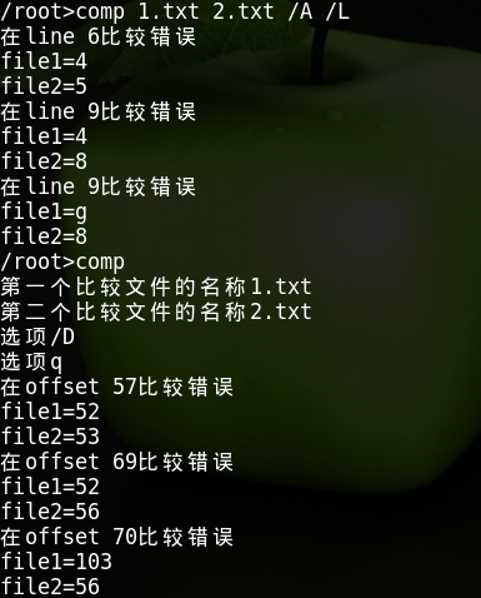
FC
功能
FC是DOS及Windows下的一个比较文件的命令行工具,使用该命令能够将两个类似文件的不同之处进行详细对比。 详细操作查看https://baike.baidu.com/item/FC/10362340?fr=aladdin
设计流程
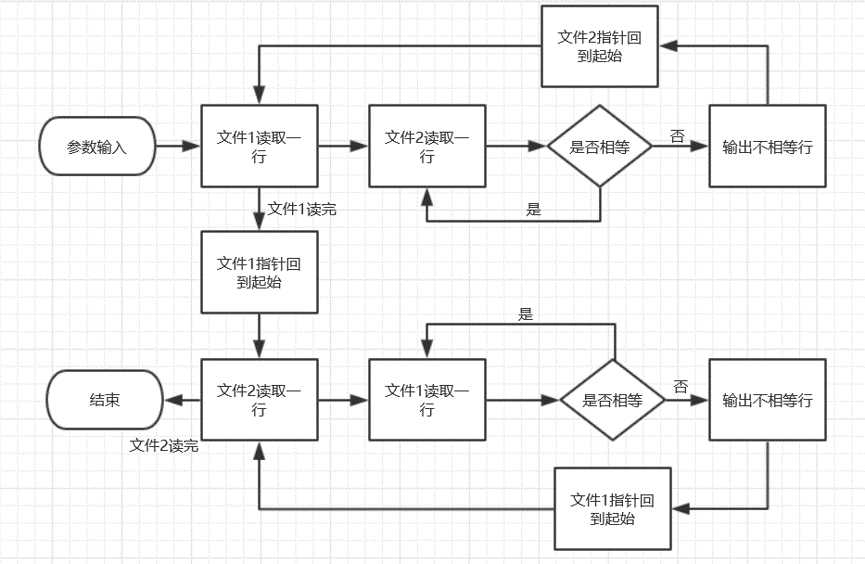 比较两个文件的不同之处,循环读取文件1的一行,与文件2的每一行进行对比,输出不相等的行。再循环读取文件2的一行,与文件1的每一行进行对比,输出不相等的行。
比较两个文件的不同之处,循环读取文件1的一行,与文件2的每一行进行对比,输出不相等的行。再循环读取文件2的一行,与文件1的每一行进行对比,输出不相等的行。
效果

EXIT
功能
退出当前命令窗口 详细操作查看https://baike.baidu.com/item/FC/10362340?fr=aladdin
设计流程
 这里实在不会实现,只好假装实现,因为通过命令窗口调用该程序,所以得到该程序的父进程的id,然后将其kill假装实现了exit
这里实在不会实现,只好假装实现,因为通过命令窗口调用该程序,所以得到该程序的父进程的id,然后将其kill假装实现了exit
效果
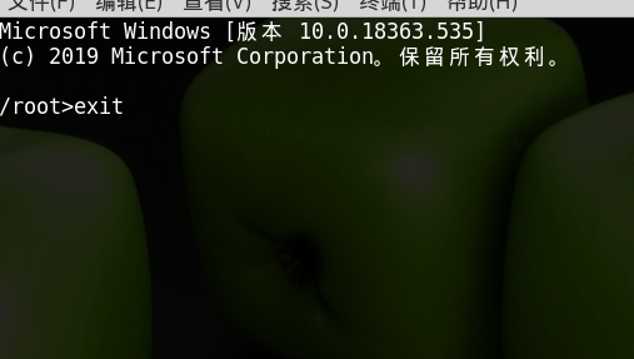
HELP
功能
help列出命令的帮助信息 详细操作查看https://jingyan.baidu.com/article/ea24bc39d29264da63b33163.html
设计流程
 直接输入help命令显示所有help信息,通过help+命令,输出对应命令的信息
直接输入help命令显示所有help信息,通过help+命令,输出对应命令的信息
效果
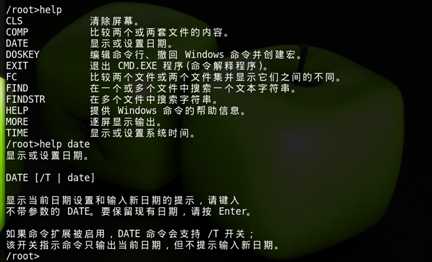
MORE
功能
more 命令将文本文档逐行进行显示, 也可显示多个文档, 跳行和显示下几行 详细操作查看https://jingyan.baidu.com/article/bad08e1e327c3709c85121fa.html 其实这个程序大部分用了github上的代码,可惜后面找不到出处了
设计流程
 主要包含more see_more do_more几个函数,这里全部展示在上图。
more允许打印多个文件,当打印满时,可以通过命令q退出命令,命令m打印更多,命令
打印下一个文件。
主要包含more see_more do_more几个函数,这里全部展示在上图。
more允许打印多个文件,当打印满时,可以通过命令q退出命令,命令m打印更多,命令
打印下一个文件。
效果
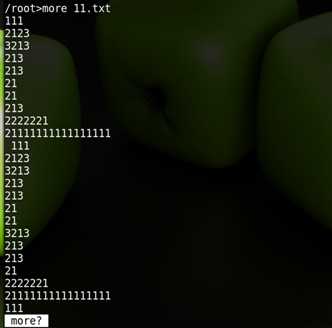 两个文件时
两个文件时
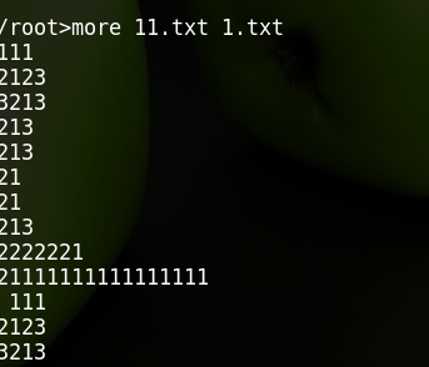 M继续显示,
显示下一个文件
M继续显示,
显示下一个文件
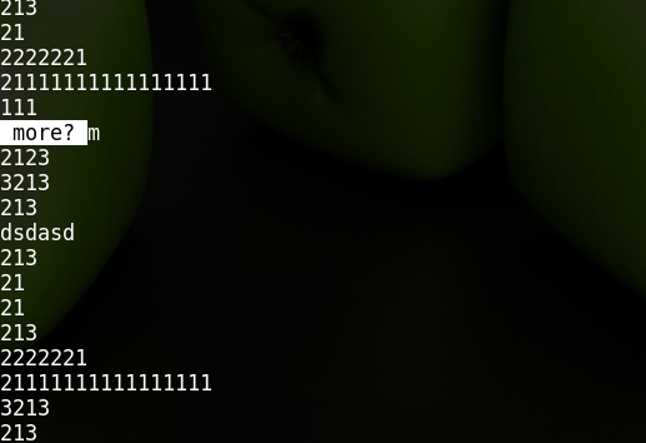
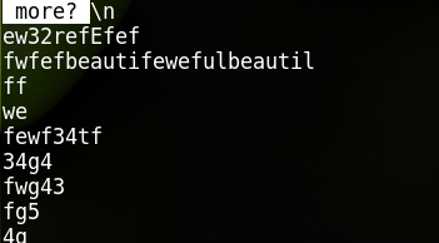
主函数
设计流程
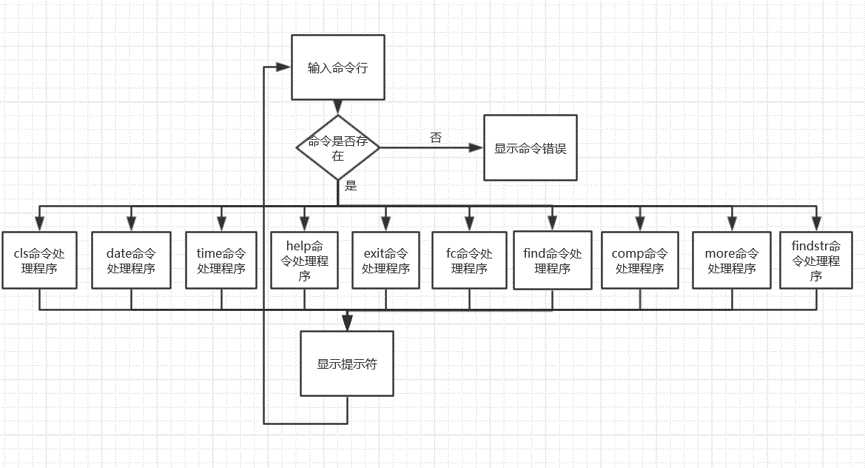
效果
为了模仿windows前面的提示符,通过getcwd()获取当前目录,并显示
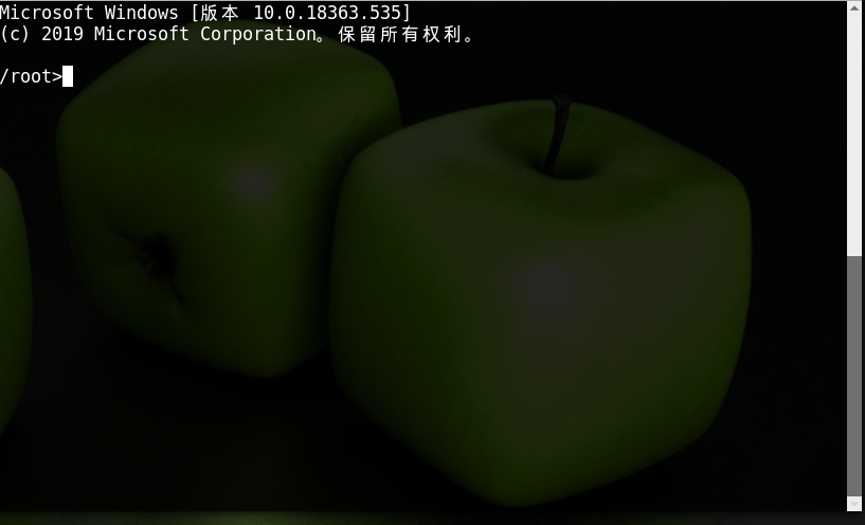
其它说明
对于格式化显示输出的问题
保留小数https://blog.csdn.net/qq_36667170/article/details/79265224 前面补0https://zhidao.baidu.com/question/2272528818662923828.html
动态开辟多个指针
参考自https://zhidao.baidu.com/question/1430108991238952819.html
pArrStr=(char**)malloc(sizeof(char*)*strLen);//动态开辟N个char*指针,然后给pArrStr保存 for(i=0;i<strLen;i++)
{
pArrStr[i]=(char*)malloc(255);
}
对时间相关模块说明
其实开始说明中的linux api文档中解释的就可以,并且有相关示例,这个也比较详细https://blog.csdn.net/lhl_blog/article/details/86238140
相关调用函数清单
struct tm
{
int tm_sec;
int tm_min;
int tm_hour;
int tm_mday;
int tm_mon;
int tm_year;
int tm_wday;
int tm_yday;
int tm_isdst;
};
int tm_sec 代表目前秒数,正常范围为0-59,但允许至61秒 int tm_min 代表目前分数,范围0-59 int tm_hour 从午夜算起的时数,范围为0-23 int tm_mday 目前月份的日数,范围01-31int tm_mon 代表目前月份,从一月算起,范围从0-11 int tm_year 从1900 年算起至今的年数int tm_wday 一星期的日数,从星期一算起,范围为0-6 int tm_yday 从今年1月1日算起至今的天数,范围为0-365 int tm_isdst 日光节约时间的旗标 此函数返回的时间日期未经时区转换,而是UTC时间。
struct timeval{
long tv_sec; /*秒*/
long tv_usec; /*微秒*/
};
struct timezone{
int tz_minuteswest; /*和Greenwich 时间差了多少分钟*/
int tz_dsttime; /*日光节约时间的状态*/
};
time_t time(time_t *t); 返回从公元1970年1月1日的UTC时间从0时0分0秒算起到现在所经过的秒数。
struct tm *localtime(const time_t *timep); 将参数timep所指的time_t结构中的信息转换成真实世界所使用的时间日期表示方法,然后将结果由结构tm返回。
time_t mktime(strcut tm *timeptr); mktime()用来将参数timeptr所指的tm结构数据转换成从公元1970年1月1日0时0分0 秒算起至今的UTC时间所经过的秒数。
int stime(long *tp)设置时间。
int settimeofday(const struct timeval *tv, const struct timezone *tz);设置当前时间。
程序涉及到了很多字符串的操作
字符串和数字的转化
https://blog.csdn.net/smile_zhangw/article/details/82051014
字符串的拼接
https://www.cnblogs.com/metaphors/p/9409153.html
相关调用函数清单
int strcmp(const char *s1, const char *s2);比较两个字符串。
char *strtok(char *s, const char *delim); strtok()用来将字符串分割成一个个片段。参数s指向欲分割的字符串,参数delim则为分割字符串,当strtok()在参数s的字符串中发现到参数delim的分割字符时则会将该字符改为� 字符。在第一次调用时,strtok()必需给予参数s字符串,往后的调用则将参数s设置成NULL。每次调用成功则返回下一个分割后的字符串指针。
在main()中的使用
//对命令按空格进行分割,命令存入*argv[]中,命令数存入argc中
if (strlen(input) != 0)
{
char *delim = " ";
char *p;
p = strtok(input, delim);
argv[0] = p;
while ((p = strtok(NULL, delim)))
{
argv[argc] = p;
argc++;
}
}
char *gets(char *s); 由标准输入设备内读进一字符串。
char *strcpy(char *dest, const char *src); strcpy()会将参数src字符串拷贝至参数dest所指的地址。
char *strcat(char *dest, const char *src);连接两个字符串。
char *strchr(const char *s, int c); 查找字符串中第一个出现的指定字符。
size_t strlen(const char *s);返回字符串长度
对涉及文件相关操作模块说明
清空缓存
因为c读取字符时,可能读到缓冲区的字符,产生影响,所以需要清除 参考https://jingyan.baidu.com/article/9f7e7ec0b5e4a86f28155415.html https://zhuanlan.zhihu.com/p/54990226
相关调用函数清单
FILE *fopen(const char *path, const char *mode); 参数path字符串包含欲打开的文件路径及文件名,参数mode字符串则代表着流形态。
char *fgets(char *s, int size, FILE *stream);从文件中读取一字符串。
long ftell(FILE *stream);取得文件流的读取位置。
struct dirent *readdir(DIR *dir);读取目录。
int fseek(FILE *stream, long offset, int whence);移动文件流的读写位置。
int fputs(const char *s, FILE *stream);将一指定字符写入文件内。
int fgetc(FILE * stream);文件中读取一个字符。
int getchar(void); getchar()用来从标准输入设备中读取一个字符。然后将该字符从unsigned char转换成int后返回。
程序
gcc -o shell shell.c
./shell

#include <stdio.h>
#include <unistd.h>
#include <stdlib.h>
#include <sys/wait.h>
#include <sys/types.h>
#include <string.h>
#include <time.h>
#include <stdbool.h>
#include <sys/time.h>
#include <time.h>
#include <stdbool.h>
#include <sys/types.h>
#include <dirent.h>
#include <unistd.h>
//findstr命令
void find1(char *argv, char *str)
{
FILE *fp;
int stringsize = strlen(str) * sizeof(char);
char *line = (char *)calloc(512, sizeof(char));
fp = fopen(argv, "r");
int i = 0;
while (fgets(line, 512, fp))
{
int j = 0;
char *start;
i = 0;
start = line;
while (i < ftell(fp) - stringsize)
{
j = 0;
while (*line)
{
if (*str == *line)
{
str++;
line++;
j++;
continue;
}
break;
}
if (j == stringsize)
{
str = str - j;
printf("%s", start);
break;
}
else
{
str = str - j;
line = line - j + 1;
}
i++;
}
}
}
void findstr(char *path, char *type, char *str)
{
DIR *dir;
struct dirent *ptr;
char *ftype = (char *)malloc(512);
char *p;
dir = opendir(path);
while ((ptr = readdir(dir)) != NULL)
{
if (strcmp(ptr->d_name, ".") == 0 || strcmp(ptr->d_name, "..") == 0) //是当前目录和父目录
continue;
else if (ptr->d_type == 4) //是dir
{
char *cpath = (char *)malloc(strlen(path) + strlen(ptr->d_name) + strlen("/") + 1);
strcpy(cpath, path);
strcat(cpath, "/");
strcat(cpath, ptr->d_name);
//findstr(cpath, type, str);
}
else//是文件
{
p = strrchr(ptr->d_name, ‘.‘);//取得文件最后一个.后的字符,即文件的类型
sprintf(ftype, "%s", p);
if (strcmp(ftype, type) == 0)
{
char *fpath = (char *)malloc(strlen(path) + strlen(ptr->d_name) + strlen("/") + 1);
strcpy(fpath, path);
strcat(fpath, "/");
strcat(fpath, ptr->d_name);
find1(fpath, str);
}
}
}
}
//find命令
int command_comp1(char **str)
{
int i = 3;
if (strcmp(str[i], "/V") == 0)//包含字符串的所在行,不显示
{
return 1;
}
else if (strcmp(str[i], "/C") == 0)//只显示包含字符串的行
{
return 2;
}
else if (strcmp(str[i], "/N") == 0)//显示找到的包含字符串的行数
{
return 3;
}
else
{
printf("命令行参数有误");
exit(0);
}
}
void find(int argc, char **argv)
{
FILE *fp;
char *string = argv[2];
int stringsize = strlen(string) * sizeof(char);
char *line = (char *)calloc(512, sizeof(char));
fp = fopen(argv[1], "r");
int i = 0, flag = 0, linec = 1, linen = 0;
int pa;
pa = command_comp1(argv);
while (fgets(line, 512, fp))//读取一行
{
int j = 0;
char *start;
i = 0;
start = line;
while (i < ftell(fp) - stringsize)//将一行的内容与字符串进行比较
{
j = 0;
while (*line)
{
if (*string == *line)
{
string++;
line++;
j++;
continue;
}
break;
}
if (j == stringsize)//比较成功
{
flag = 1;
linen++;
string = string - j;
}
else//比较失败,回退
{
string = string - j;
line = line - j + 1;
}
i++;
}
if (pa == 1)
{
if (flag != 1)
{
printf("%s", start);
}
else
{
printf("
");
}
}
else if (pa == 3)
{
if (flag == 1)
{
printf("%d ", linec);
printf("%s", start);
}
}
linec++;
flag = 0;
}
if (pa == 2 && linen != 0)
{
printf("%d
", linen);
}
}
//comp命令
long fsize(FILE *f)//比较两个文件的大小
{
long size;
fseek(f, 0, SEEK_END); ///将文件指针移动文件结尾
size = ftell(f); ///求出当前文件指针距离文件开始的字节数
return size;
}
int command_comp(char **str, int c)
{
int flag = 0;
int i = 3;
if (i == c)
{
return flag;
}
for (i; i < c; i++)
{
if (strcmp(str[i], "/L") == 0)//显示行号
{
flag = flag + 1;
}
else if (strcmp(str[i], "/A") == 0)//显示char型
{
if (flag == 1 || flag == 0)
{
flag = flag + 2;
}
}
else if (strcmp(str[i], "/D") == 0)//显示十进制
{
if (flag == 1 || flag == 0)
{
flag = flag + 4;
}
}
else if (strcmp(str[i], "q") == 0)
{
}
else
{
printf("命令行参数有误");
exit(0);
}
}
return flag;
}
void file_comp(char *file1, char *file2, int para)
{
FILE *f1;
FILE *f2;
char char1, char2;
int offset = 0;
int line = 1;
f1 = fopen(file1, "r");
f2 = fopen(file2, "r");
if (fsize(f1) != fsize(f2))//比较文件大小
{
printf("文件的大小不同");
}
else
{
fseek(f1, 0, SEEK_SET);
fseek(f2, 0, SEEK_SET);
char1 = fgetc(f1);
char2 = fgetc(f2);
offset++;
if (char1 == ‘
‘)
{
line++;
}
while (char1 != EOF)
{
if (char1 != char2)
{
if (para == 0)
{
printf("在offset %d比较错误
", offset);
printf("file1=%x
", char1);
printf("file2=%x
", char2);
}
else if (para == 1)
{
printf("在line %d比较错误
", line);
printf("file1=%x
", char1);
printf("file2=%x
", char2);
}
else if (para == 2)
{
printf("在offset %d比较错误
", offset);
printf("file1=%c
", char1);
printf("file2=%c
", char2);
}
else if (para == 4)
{
printf("在offset %d比较错误
", offset);
printf("file1=%d
", (int)char1);
printf("file2=%d
", (int)char2);
}
else if (para == 3)
{
printf("在line %d比较错误
", line);
printf("file1=%c
", char1);
printf("file2=%c
", char2);
}
else
{
printf("在line %d比较错误
", line);
printf("file1=%d
", char1);
printf("file2=%d
", char2);
}
}
char1 = fgetc(f1);
char2 = fgetc(f2);
offset++;
if (char1 == ‘
‘)
{
line++;
}
}
}
}
void comp(int ac, char **av)
{
int pa;
char **command;
int strLen = 10;
command = (char **)malloc(sizeof(char *) * strLen); //动态开辟多个char*指针
for (int i = 0; i < strLen; i++)
{
command[i] = (char *)malloc(255);
}
command[0] = "0";
if (ac == 1)
{
char *f1;
char *f2;
int i = 1;
char line1[512];
char line2[512];
printf("第一个比较文件的名称");
scanf("%s", command[i]);
i++;
printf("第二个比较文件的名称");
scanf("%s", command[i]);
while (strcmp(command[i], "q") != 0)
{
i++;
printf("选项");
scanf("%s", command[i]);
}
pa = command_comp(command, i);//分析参数
file_comp(command[1], command[2], pa);//字符查找
}
else
{
pa = command_comp(av, ac);
file_comp(av[1], av[2], pa);
}
}
//fc命令
void fc(char **argv)
{
FILE *fp1;
FILE *fp2;
fp1 = fopen(argv[1], "r");
fp2 = fopen(argv[2], "r");
char line1[512];
char line2[512];
int flag = 0;
printf("正在比较文件 %s 和 %s
", argv[1], argv[2]);
printf("****%s
", argv[1]);
while (fgets(line1, 512, fp1))//读取文件1的一行,与文件2的每一行相比较
{
flag = 0;
while (fgets(line2, 512, fp2))
{
if (strcmp(line1, line2) == 0)
{
flag = 1;
break;
}
}
if (flag == 0)
{
fputs(line1, stdout);
}
fseek(fp2, 0, SEEK_SET);//文件指针指向开头
}
fseek(fp1, 0, SEEK_SET);
printf("****%s
", argv[2]);
while (fgets(line2, 512, fp2))//读取文件2的一行,与文件1的每一行相比较
{
flag = 0;
while (fgets(line1, 512, fp1))
{
if (strcmp(line1, line2) == 0)
{
flag = 1;
break;
}
}
if (flag == 0)
{
fputs(line2, stdout);
}
fseek(fp1, 0, SEEK_SET);
}
if (flag == 1)
{
printf("找不到差异");
}
}
/more命令
int see_more()
{
int c;
printf("�33[7m more? �33[0m"); // : �33[7m printf反显
c = getchar();
if (c != EOF)
{
if (c == ‘q‘)//退出
return 0;
if (c == ‘m‘)//继续显示
return 24;
if (c == ‘
‘)//显示下一个文件
return 1;
}
return 0;
}
void do_more(FILE *fp)
{
char line[512];
int num_of_line = 0;
int reply;
//读取每一行赋值给line
while (fgets(line, 512, fp))
{
if (num_of_line == 24)
{ //满屏
reply = see_more();
if (reply == 0)
break;
num_of_line -= reply;
}
if (fputs(line, stdout) == EOF) //打印
break;
num_of_line++;
}
}
void more(int argc, char **argv)
{
FILE *fp;
if (argc == 1)
{
do_more(stdin);
}
else
{
while (--argc)
{
if ((fp = fopen(*++argv, "r")) != NULL)
{
do_more(fp);
fclose(fp);
}
else
break;
}
}
}
//help命令
void help(int argc, char **argv)
{
int n = 0;
if (argc == 1)
{
printf("CLS 清除屏幕。
");
printf("COMP 比较两个或两套文件的内容。
");
printf("DATE 显示或设置日期。
");
printf("DOSKEY 编辑命令行、撤回 Windows 命令并创建宏。
");
printf("EXIT 退出 CMD.EXE 程序(命令解释程序)。
");
printf("FC 比较两个文件或两个文件集并显示它们之间的不同。
");
printf("FIND 在一个或多个文件中搜索一个文本字符串。
");
printf("FINDSTR 在多个文件中搜索字符串。
");
printf("HELP 提供 Windows 命令的帮助信息。
");
printf("MORE 逐屏显示输出。
");
printf("TIME 显示或设置系统时间。
");
}
else
{
if (strcmp(argv[1], "cls") == 0)
{
printf("清除屏幕。
CLS
");
n = 1;
}
if (strcmp(argv[1], "comp") == 0)
{
printf("比较两个文件或两个文件集的内容。
COMP [data1] [data2] [/D] [/A] [/L] [/N=number] [/C] [/OFF[LINE]] [/M]
data1 指定要比较的第一批文件的位置和名称。
data2 指定要比较的第二批文件的位置和名称。
/D 以十进制格式显示差异。
/A 以 ASCII 字符显示差异。
/L 显示不同的行数。
/N=number 只比较每个文件中第一个指定的行数。
/C 比较文件时 ASCII 字母不区分大小写。
/OFF[LINE] 不要跳过带有脱机属性集的文件。
/M 不提示比较更多文件。
要比较文件集,请在 data1 和 data2 参数中使用通配符。
");
n = 1;
}
if (strcmp(argv[1], "date") == 0)
{
printf("显示或设置日期。
DATE [/T | date]
显示当前日期设置和输入新日期的提示,请键入
不带参数的 DATE。要保留现有日期,请按 Enter。
如果命令扩展被启用,DATE 命令会支持 /T 开关;
该开关指示命令只输出当前日期,但不提示输入新日期。
");
n = 1;
}
if (strcmp(argv[1], "doskey") == 0)
{
printf("编辑命令行,重新调用 Windows 命令,并创建宏。
DOSKEY [/REINSTALL] [/LISTSIZE=size] [/MACROS[:ALL | :exename]]
[/HISTORY] [/INSERT | /OVERSTRIKE] [/EXENAME=exename] [/MACROFILE=filename]
[macroname=[text]]
/REINSTALL 安装新的 Doskey 副本。
/LISTSIZE=size 设置命令历史记录的缓冲区大小。
/MACROS 显示所有 Doskey 宏。
/MACROS:ALL 为具有 Doskey 宏的所有可执行文件显示
所有 Doskey 宏。
/MACROS:exename 显示指定可执行文件的所有 Doskey 宏。
/HISTORY 显示存储在内存中的所有命令。
/INSERT 指定你键入的新文本插入到旧文本中。
/OVERSTRIKE 指定新文本覆盖旧文本。
/EXENAME=exename 指定可执行文件。
/MACROFILE=filename 指定要安装的宏文件。
macroname 指定你创建的宏的名称。
text 指定要录制的命令。
上下箭头 重新调用命令;Esc 清除命令行;F7
显示命令历史记录;Alt+F7 清除
命令历史记录;F8 搜索命令历史记录;F9 按编号选择命令;Alt+F10 清除宏定义。
以下是 Doskey 宏定义的一些特殊代码:
$T 命令分隔符。允许一个宏中存在多个命令。
$1-$9 批处理参数。与批处理程序中的 %1-%9 等同。
$* 以命令行中命令名称后面的任何内容替换的符号。
");
n = 1;
}
if (strcmp(argv[1], "exit") == 0)
{
printf("退出 CMD.EXE 程序(命令解释器)或当前批处理脚本。
EXIT [/B] [exitCode]
/B 指定要退出当前批处理脚本而不是 CMD.EXE。如果从一个
批处理脚本外执行,则会退出 CMD.EXE
exitCode 指定一个数字号码。如果指定了 /B,将 ERRORLEVEL
设成那个数字。如果退出 CMD.EXE,则用那个数字设置
过程退出代码。
");
n = 1;
}
if (strcmp(argv[1], "fc") == 0)
{
printf("比较两个文件或两个文件集并显示它们之间
的不同
FC [/A] [/C] [/L] [/LBn] [/N] [/OFF[LINE]] [/T] [/U] [/W] [/nnnn]
[drive1:][path1]filename1 [drive2:][path2]filename2
FC /B [drive1:][path1]filename1 [drive2:][path2]filename2
/A 只显示每个不同处的第一行和最后一行。
/B 执行二进制比较。
/C 不分大小写。
/L 将文件作为 ASCII 文字比较。
/LBn 将连续不匹配的最大值设置为指定
的行数。
/N 在 ASCII 比较上显示行数。
/OFF[LINE] 不要跳过带有脱机属性集的文件。
/T 不要将制表符扩充到空格。
/U 将文件作为 UNICODE 文本文件比较。
/W 为了比较而压缩空白(制表符和空格)。
/nnnn 指定不匹配处后必须连续
匹配的行数。
[drive1:][path1]filename1
指定要比较的第一个文件或第一个文件集。
[drive2:][path2]filename2
指定要比较的第二个文件或第二个文件集。
");
n = 1;
}
if (strcmp(argv[1], "find ") == 0)
{
printf("在文件中搜索字符串。
FIND [/V] [/C] [/N] [/I] [/OFF[LINE]] "string" [[drive:][path]filename[ ...]]
/V 显示所有未包含指定字符串的行。
/C 仅显示包含字符串的行数。
/N 显示行号。
/I 搜索字符串时忽略大小写。
/OFF[LINE] 不要跳过具有脱机属性集的文件。
"string" 指定要搜索的文本字符串。
[drive:][path]filename
指定要搜索的文件。
如果没有指定路径,FIND 将搜索在提示符处键入
的文本或者由另一命令产生的文本。
");
n = 1;
}
if (strcmp(argv[1], "findstr") == 0)
{
printf("在文件中寻找字符串。
FINDSTR [/B] [/E] [/L] [/R] [/S] [/I] [/X] [/V] [/N] [/M] [/O] [/P] [/F:file]
[/C:string] [/G:file] [/D:dir list] [/A:color attributes] [/OFF[LINE]]
strings [[drive:][path]filename[ ...]]
/B 在一行的开始配对模式。
/E 在一行的结尾配对模式。
/L 按字使用搜索字符串。
/R 将搜索字符串作为一般表达式使用。
/S 在当前目录和所有子目录中搜索匹配文件。
/I 指定搜索不分大小写。
/X 打印完全匹配的行。
/V 只打印不包含匹配的行。
/N 在匹配的每行前打印行数。
/M 如果文件含有匹配项,只打印其文件名。
/O 在每个匹配行前打印字符偏移量。
/P 忽略有不可打印字符的文件。
/OFF[LINE] 不跳过带有脱机属性集的文件。
/A:attr 指定有十六进位数字的颜色属性。请见 "color /?"
/F:file 从指定文件读文件列表 (/ 代表控制台)。
/C:string 使用指定字符串作为文字搜索字符串。
/G:file 从指定的文件获得搜索字符串。 (/ 代表控制台)。
/D:dir 查找以分号为分隔符的目录列表
strings 要查找的文字。
[drive:][path]filename
指定要查找的文件。
除非参数有 /C 前缀,请使用空格隔开搜索字符串。
例如: ‘FINDSTR "hello there" x.y‘ 在文件 x.y 中寻找 "hello" 或
"there"。‘FINDSTR /C:"hello there" x.y‘ 文件 x.y 寻找
"hello there"。
一般表达式的快速参考:
. 通配符: 任何字符
* 重复: 以前字符或类出现零或零以上次数
^ 行位置: 行的开始
$ 行位置: 行的终点
[class] 字符类: 任何在字符集中的字符
[^class] 补字符类: 任何不在字符集中的字符
[x-y] 范围: 在指定范围内的任何字符
x Escape: 元字符 x 的文字用法
<xyz 字位置: 字的开始
xyz> 字位置: 字的结束
有关 FINDSTR 常见表达法的详细情况,请见联机命令参考。
");
n = 1;
}
if (strcmp(argv[1], "help") == 0)
{
printf("提供 Windows 命令的帮助信息。
HELP [command]
command - 显示该命令的帮助信息。
");
n = 1;
}
if (strcmp(argv[1], "more") == 0)
{
printf("逐屏显示输出。
MORE [/E [/C] [/P] [/S] [/Tn] [+n]] < [drive:][path]filename
command-name | MORE [/E [/C] [/P] [/S] [/Tn] [+n]]
MORE /E [/C] [/P] [/S] [/Tn] [+n] [files]
[drive:][path]filename 指定要逐屏显示的文件。
command-name 指定要显示其输出的命令。
/E 启用扩展功能
/C 显示页面前先清除屏幕
/P 扩展 FormFeed 字符
/S 将多个空白行缩成一行
/Tn 将制表符扩展为 n 个空格(默认值为 8)
开关可以出现在 MORE 环境变量中。
+n 从第 n 行开始显示第一个文件
files 要显示的文件列表。使用空格分隔列表中的文件。
如果已启用扩展功能,则在 -- More -- 提示处 接受下列命令:
P n 显示下 n 行
S n 跳过下 n 行
F 显示下个文件
Q 退出
= 显示行号
? 显示帮助行
<space> 显示下一页
<ret> 显示下一行
");
n = 1;
}
if (strcmp(argv[1], "time") == 0)
{
printf("显示或设置系统时间。
TIME [/T | time]
显示当前时间设置和输入新时间的提示,请键入
不带参数的 TIME。要保留现有时间,请按 Enter。
如果命令扩展被启用,TIME 命令会支持 /T 命令行开关;该命令行开关告诉
命令只输出当前时间,但不提示输入新时间。
");
n = 1;
}
if (n == 0)
{
printf("帮助工具不支持此命令。请尝试" %s /?"。
", argv[1]);
}
}
}
//time命令
bool IsLegal(int hour, int minute, int second)//判断时间是否合法的函数
{
if (hour >= 0 && hour <= 23 && minute >= 0 && minute <= 59 && second >= 0 && second <= 59)
{
return true;
}
else
{
return false;
}
}
void Time(int argc, char **argv)
{
int innum = argc;
time_t timep;
struct tm *p;
int hour;
int minute;
int second;
time_t tt;
const char s[2] = ":";
char *token;
//getopt(argc, argv, "ab");
if (innum == 1)
{
time(&timep);
p = localtime(&timep);//取得当地时间
printf("当前时间:%02d:%02d:%02d
", p->tm_hour, p->tm_min, p->tm_sec);
while (1)
{
printf("输入新时间:");
scanf("%d:%d:%d", &hour, &minute, &second);
//转化为tm结构
p->tm_hour = hour;
p->tm_min = minute;
p->tm_sec = second;
//转化为time_t结构
tt = mktime(p);
char ch;
while ((ch = getchar()) != ‘
‘ && ch != EOF)
;
if (IsLegal(hour, minute, second))//判断时间是否合法
{
if (stime(&tt) < 0)//设置时间
{
printf("系统无法接受输入的时间
");
}
else
{
break;
}
}
else
{
printf("系统无法接受输入的时间
");
}
}
}
else if (innum == 2)
{
if (strcmp(argv[1], "/t") == 0)
{
time(&timep);
p = localtime(&timep);
printf("当前时间:%02d:%02d:%02d
", p->tm_hour, p->tm_min, p->tm_sec);
}
else if (strcmp(argv[1], "?") == 0)
{
printf("显示或设置系统时间。
");
printf("
TIME [/T| time]
");
printf("
显示当前时间设置和输入新时间的提示,请键入不带参数的 TIME。要保留现有时间,请按 Enter。
");
printf("如果命令扩展被启用,TIME 命令会支持 /T 命令行开关;该命令行开关告诉命令只输出当前时间,但不提示输入新时间。
");
}
else
{
printf("%s", argv[1]);
time(&timep);
p = localtime(&timep);
//通过‘:‘将输入字符分割
if (token = strtok(argv[1], s))
{
hour = atoi(token);
if (token = strtok(NULL, s))
{
minute = atoi(token);
if (token = strtok(NULL, s))
{
second = atoi(token);
p->tm_hour = hour;
p->tm_min = minute;
p->tm_sec = second;
tt = mktime(p);
}
else
{
}
}
else
{
}
}
else
{
}
while (1)
{
if (IsLegal(hour, minute, second))
{
if (stime(&tt) < 0)
{
printf("系统无法接受输入的时间
");
}
else
{
break;
}
}
else
{
printf("系统无法接受输入的时间
");
}
printf("输入新时间:");
scanf("%d:%d:%d", &hour, &minute, &second);
p->tm_hour = hour;
p->tm_min = minute;
p->tm_sec = second;
tt = mktime(p);
char ch;
while ((ch = getchar()) != ‘
‘ && ch != EOF)
;
}
}
}
else
{
printf("系统无法接受输入的时间");
}
}
//date命令
bool IsLeapYear(int year)//判断日期是否合法的函数
{
if (((year % 4 == 0) && (year % 100 != 0)) || (year % 400 == 0))
return true;
return false;
}
bool DIsLegal(int year, int mon, int day)
{
if (year < 0 || mon <= 0 || mon > 12 || day <= 0 || day > 31)
return false;
if (1 == mon || 3 == mon || 5 == mon || 7 == mon || 8 == mon || 10 == mon || 12 == mon)
{
return true;
}
if (IsLeapYear(year))
{
if (2 == mon && (28 == day || 30 == day || 31 == day))
return false;
return true;
}
else
{
if (2 == mon && (29 == day || 30 == day || 31 == day))
return false;
return true;
}
}
void date(int argc, char **argv)
{
char *wday[] = {"Sunday", "Monday", "Tuesday", "Wednesday", "Thursday", "Friday", "Saturday"};
time_t timep;
struct tm *p;
int innum = argc;
int year;
int mon;
int day;
struct tm settime;
struct timeval tv;
const char s[2] = "-";
char *token;
//getopt(argc, argv, "ab");
if (innum == 1)
{
time(&timep);
p = localtime(&timep); //取得当地时间
printf("% d/% d/ % d % s
", (1900 + p->tm_year), (1 + p->tm_mon), p->tm_mday, wday[p->tm_wday]);
while (1)
{
printf("输入新日期:<年月日>");
scanf("%d-%d-%d", &year, &mon, &day);
//将日期转化为tm结构
settime.tm_mday = day;
settime.tm_mon = mon - 1;
settime.tm_year = year - 1900;
//通过tm结构转化我timeval结构
tv.tv_sec = mktime(&settime);
tv.tv_usec = 0;
char ch;
while ((ch = getchar()) != ‘
‘ && ch != EOF)//清空内存中的字符
;
if (DIsLegal(year, mon, day))//判断是否合法
{
if (settimeofday(&tv, (struct timezone *)0) < 0)//设置时间
{
printf("系统无法接受输入的日期
");
}
else
{
break;
}
}
else
{
printf("系统无法接受输入的日期
");
}
}
}
else if (innum == 2)
{
if (strcmp(argv[1], "/t") == 0)
{
time(&timep);
p = localtime(&timep); //取得当地时间
printf("% d/% d/ % d % s
", (1900 + p->tm_year), (1 + p->tm_mon), p->tm_mday, wday[p->tm_wday]);
}
else if (strcmp(argv[1], "?") == 0)
{
printf("显示或设置日期。
");
printf("
DATE [/T| date]
");
printf("
显示当前日期设置和输入新日期的提示,请键入不带参数的DATE。要保留现有日期,请按Enter。
");
printf("如果命令扩展被启用,DATE命令会支持/T开关:该开关指示命令只输出当前日期,但不提示输出新日期。
");
}
//将输入的字符通过‘-‘分割
else
{
if (token = strtok(argv[1], s))
{
year = atoi(token);
if (token = strtok(NULL, s))
{
mon = atoi(token);
if (token = strtok(NULL, s))
{
day = atoi(token);
settime.tm_mday = day;
settime.tm_mon = mon - 1;
settime.tm_year = year - 1900;
tv.tv_sec = mktime(&settime);
tv.tv_usec = 0;
}
else
{
}
}
else
{
}
}
else
{
}
while (1)
{
if (IsLegal(year, mon, day))
{
if (settimeofday(&tv, (struct timezone *)0) < 0)
{
printf("系统无法接受输入的日期
");
}
else
{
break;
}
}
else
{
printf("系统无法接受输入的日期
");
}
printf("输入新日期:<年月日>");
scanf("%d-%d-%d", &year, &mon, &day);
settime.tm_mday = day;
settime.tm_mon = mon - 1;
settime.tm_year = year - 1900;
tv.tv_sec = mktime(&settime);
tv.tv_usec = 0;
char ch;
while ((ch = getchar()) != ‘
‘ && ch != EOF)
;
}
}
}
else
{
printf("系统无法接受输入的日期");
}
}
//cls命令
void cls(int argc, char **argv)
{
if (argc == 1)
{
fputs("x1b[2Jx1b[H", stdout);//屏幕控制指令,清除屏幕
}
else
{
if (strcmp(argv[1], "?") == 0)
{
printf("清除屏幕
");
printf("
CLS
");
printf("
");
}
else
{
fputs("x1b[2Jx1b[H", stdout);
}
}
}
//exit命令
void Exit()
{
char *f = "kill -9 ";
char str[10];
int d = getppid();//获取当前进程的父进程
sprintf(str, "%d", d);//将d转化为字符串
//字符串的拼接
char *command = (char *)malloc(strlen(f) + strlen(str));
strcpy(command, f);
strcat(command, str);
system(command);//执行系统命令
}
//主函数
int main()
{
char *input = (char *)malloc(2024);
int argc;
int i;
fputs("x1b[2Jx1b[H", stdout);//清除屏幕
char buf[80];
getcwd(buf, sizeof(buf));//获取当前路径
printf("Microsoft Windows [版本 10.0.18363.535]
(c) 2019 Microsoft Corporation。保留所有权利。
");
printf("
");
printf("%s>", buf);
while (gets(input))
{
char **argv = (char **)malloc(2024);
char *temp = (char *)malloc(2024);
argc = 1;
i = 0;
//对命令按空格进行分割,命令存入*argv[]中,命令数存入argc中
if (strlen(input) != 0)
{
char *delim = " ";
char *p;
p = strtok(input, delim);
argv[0] = p;
while ((p = strtok(NULL, delim)))
{
argv[argc] = p;
argc++;
}
}
//判断命令
if (0 == strcmp(argv[0], "find"))
find(argc, argv);
else if (0 == strcmp(argv[0], "findstr"))
findstr(argv[1], argv[2], argv[3]);
else if (0 == strcmp(argv[0], "comp"))
comp(argc, argv);
else if (0 == strcmp(argv[0], "fc"))
fc(argv);
else if (0 == strcmp(argv[0], "date"))
date(argc, argv);
else if (0 == strcmp(argv[0], "time"))
Time(argc, argv);
else if (0 == strcmp(argv[0], "more"))
more(argc, argv);
else if (0 == strcmp(argv[0], "cls"))
cls(argc, argv);
else if (0 == strcmp(argv[0], "help"))
help(argc, argv);
else if (0 == strcmp(argv[0], "exit"))
Exit();
else
{
printf("命令行有误");
}
//释放内存
free(argv);
free(temp);
printf("%s>", buf);
}
}
以上是关于为Linux 操作系统建立兼容的 Windows命令接口的主要内容,如果未能解决你的问题,请参考以下文章